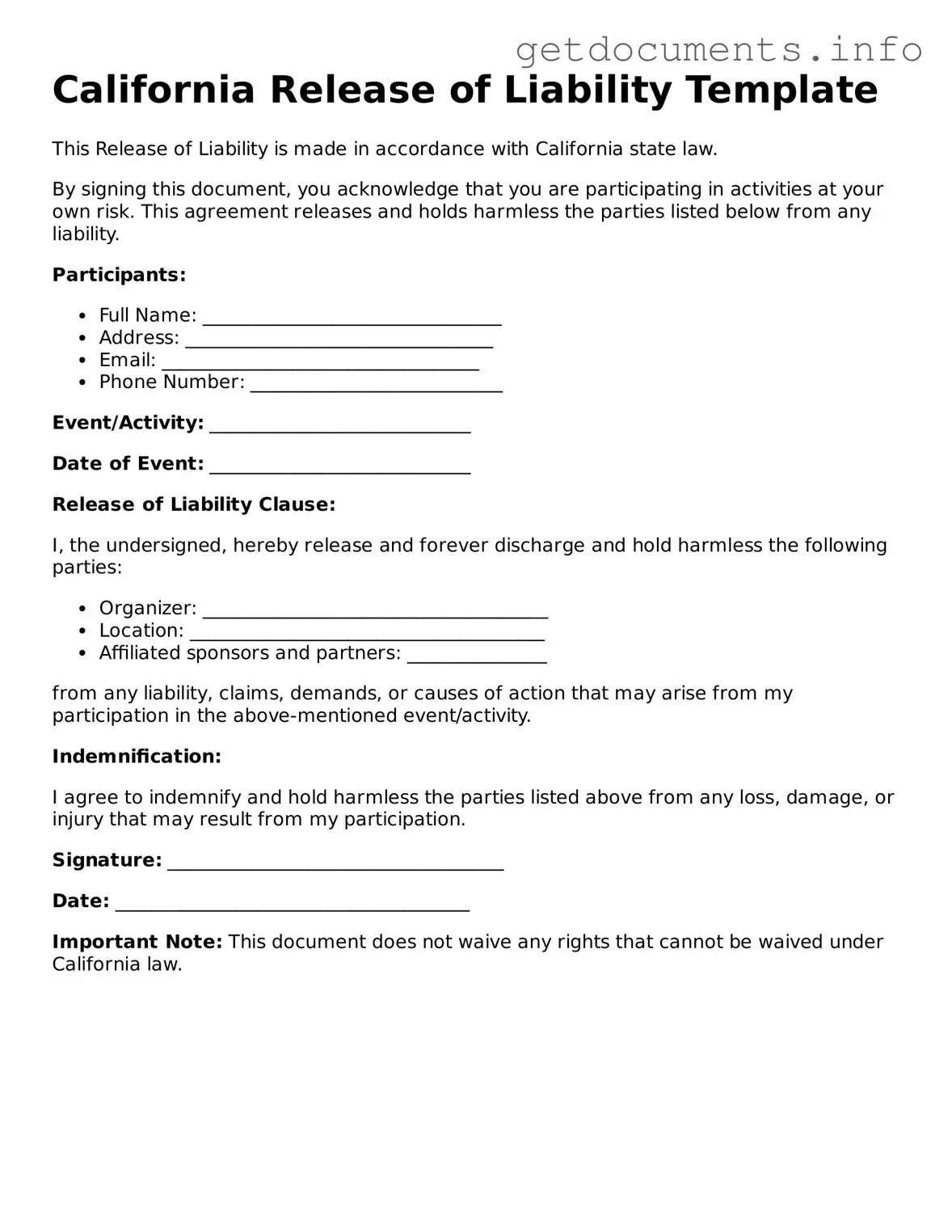Free Release of Liability Template for California
The California Release of Liability form is a legal document designed to protect individuals and organizations from claims arising from injuries or damages that may occur during an activity. By signing this form, participants acknowledge the risks involved and agree not to hold the organizers liable. If you're ready to safeguard your interests, fill out the form by clicking the button below.
Access Release of Liability Editor
